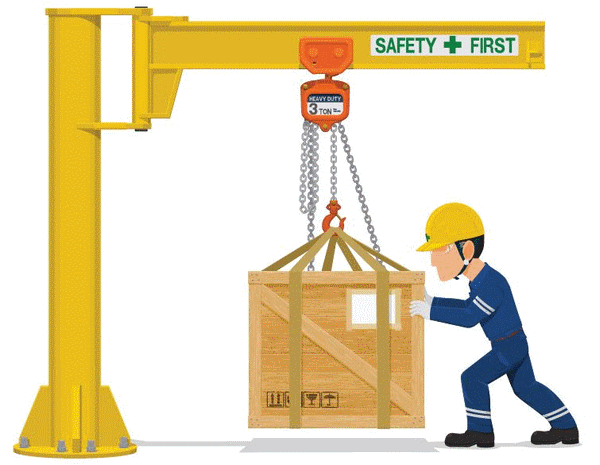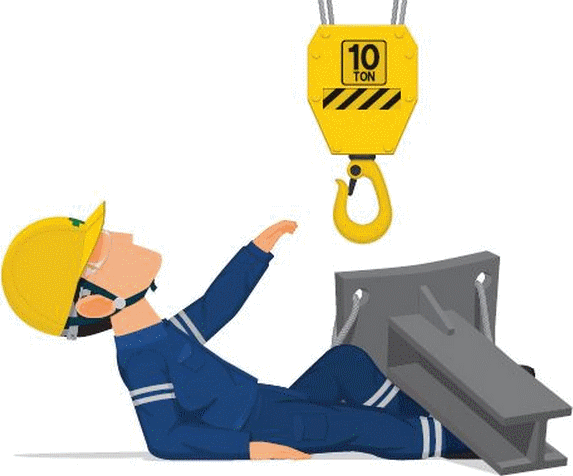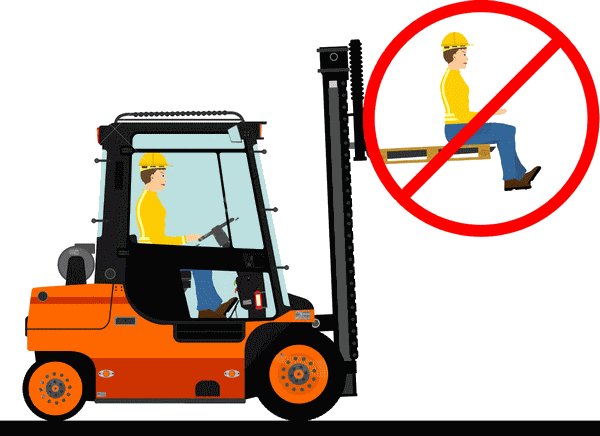
 |
Operating cranes |
Before you start working with a crane, it is necessary to determine exactly what you will be doing. In doing so, include your surroundings. How will your work affect the immediate environment?
Once you've mapped that out, it's time to check that all safeguards are working properly. The emergency stop is particularly important here. If it is not working properly, you cannot use a crane or hoist!
Safe position
To ensure your own safety while lifting, you obviously make sure you have the proper personal protective equipment. In addition, you choose a safe and strategic position in relation to the crane or hoist, and the workload.
Suppose a chain snaps or the winch's steel cable snaps, the load does not always fall straight down. Sometimes the load can fall down at a certain angle. Therefore, take this into account when taking your position.
Remember the most important thing: No one should ever stand or walk under the load! Not even when a crane or hoist is not being operated. Always move forward and always keep your distance from the load. Never walk backwards while moving the load.

Button box or radio control
Once your workstation is in place, you can start operating the crane. This can be done with a standard button box with a cable attached or with a radio remote control.
With the controls, you have several options in speed. Use the low speed while you start hoisting, cat riding or crane riding. Then you can increase the speed if necessary.
This way you avoid a huge peak load in the lifting equipment. It also prevents jerky movement in the crane. Starting slowly is safer and ultimately works faster.
Gradual lifting
When working with cranes and hoists, it is important to proceed gradually. It is important to limit yourself to one movement at a time so that you keep an overview.
As far as overview is concerned, you absolutely must not lose sight of the load while moving/lifting. Especially also for the safety of your colleagues. To guarantee this, it is important to make arrangements with them so that they know where they stand.
What exactly are you going to do? Do you need help with this? For example, you may have such a large load that you need to steer with several people. Then you may want to use steering lines so you can keep your distance from the load.

Hoisting vertically only
It is also important to know that with a crane or hoist you can only make a vertical movement. So do not attempt to drag a load under the crane.
Hoisting at an angle or dragging the load can cause damage to the wire rope and/or wire guide. These are crucial parts of a hoist.
The wire rope is forced into the correct position by the wire guide on top of the drum. These parts can easily break down if you work improperly. If these get damaged, it becomes hugely risky to work with a crane.
Related Post(s)

Never allow anyone to be lifted while standing on the forks or on a pallet lifted by the forks!...